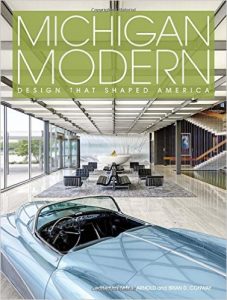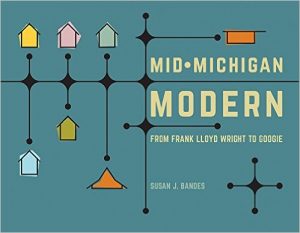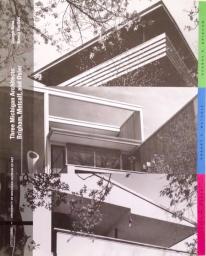Yamasaki Lecture
On October 10, 2018 at 7 PM there will be an event at the downtown Ann Arbor District Library. The event is free and no sign up is required to attend.
Dale Gyure, author of Minoru Yamasaki: Humanist Architecture for a Modernist World will present a power-point illustrated lecture on Yamasaki. Best known as the architect for the infamous Twin Towers, Yamasaki was based in Detroit for much of his career. His local work includes four unique buildings on Wayne University’s campus, the Michigan Consolidated Gas building in downtown Detroit, and the Chelsea, Michigan high school. Gyure teaches architectural history and theory at Lawrence Tech and is the author of many books on architectural subjects.
Born to Japanese immigrant parents in Seattle, Minoru Yamasaki (1912–1986) became one of the towering figures of midcentury architecture, even appearing on the cover of Time magazine in 1963. His self-proclaimed humanist designs merged the modern materials and functional considerations of postwar American architecture with traditional elements such as arches and colonnades. Yamasaki’s celebrated and iconic projects of the 1950s and ’60s, including the Lambert–St. Louis Airport and the U.S. Science Pavilion in Seattle, garnered popular acclaim.
Despite this initial success, Yamasaki’s reputation began to decline in the 1970s with the mixed critical reception of the World Trade Center in New York, one of the most publicized projects in the world at the time, and the spectacular failure of St. Louis’s Pruitt-Igoe Apartments, which came to symbolize the flaws of midcentury urban renewal policy. And as architecture moved in a more critical direction influenced by postmodern theory, Yamasaki seemed increasingly old-fashioned. In the first book to examine Yamasaki’s life and career, Dale Allen Gyure draws on a wealth of previously unpublished archival material, and nearly 200 images, to contextualize his work against the framework of midcentury modernism and explore his initial successes, his personal struggles—including with racism—and the tension his work ultimately found in the divide between popular and critical taste.
Dale Allen Gyure, Ph.D., is Professor and Associate Chair of Architecture at Lawrence Technological University in Southfield, Michigan, where he teaches classes in architectural history and theory. Dr. Gyure’s research focuses on American architecture of the nineteenth and twentieth centuries, particularly the intersections of architecture, education, and society. His published works include the books Frank Lloyd Wright’s Florida Southern College (2010), The Chicago Schoolhouse, 1856-2006: High School Architecture and Educational Reform (2011), Minoru Yamasaki: Humanist Architecture for a Modernist World (2017), and The Schoolroom: A Social History of Teaching and Learning (2018), as well as numerous book chapters and articles. Professor Gyure has served on the Boards of Directors of the Society of Architectural Historians and the Frank Lloyd Wright Building Conservancy, and is a current member of the Michigan Historic Preservation Review Board.

 In every way, this copiously illustrated book pleases and informs. Its editors have understood the mission, perfectly, to make a case for Michigan Modernism, not as a derivative response to ideas imported from elsewhere but as an original expression that “grew from the state’s indigenous industries and the populations they served.” (Alec Hess, Foreword) The proof comes by way of 28 essays and interviews presented in 4 categories of inquiry.
In every way, this copiously illustrated book pleases and informs. Its editors have understood the mission, perfectly, to make a case for Michigan Modernism, not as a derivative response to ideas imported from elsewhere but as an original expression that “grew from the state’s indigenous industries and the populations they served.” (Alec Hess, Foreword) The proof comes by way of 28 essays and interviews presented in 4 categories of inquiry.
 Three Michigan Architects: Brigham, Metcalf, and Osler
Three Michigan Architects: Brigham, Metcalf, and Osler